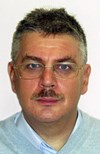International Clinical Trials In Serbia: Why Not Enroll The Right Patients Fast?
 |
 |
 |
 |
| Jelena Barjaktarovic, senior clinical trial specialist, PSI CRO AG. | Maxim Belotserkovsky, senior director, head of medical affairs, PSI CRO AG. | Mirjana Jovanovic, country manager, Serbia, PSI CRO AG. | Melita Zonic, matrix services officer, PSI CRO AG. |
It would be fair to say that applying the principles of evidence-based medicine and more stringent requirements of regulatory authorities (among which the FDA is first and foremost) to prove the efficacy and safety of newly developed drugs leads to the stable and steady growth of the number of clinical trials. It would be good to mention here that in the last 5 years clinical trials involved approximately 50,000 sites across the globe annually enrolling 1.5 million patients each year. At the same time, it is obvious that such a number of patients may not be enrolled by the United States alone, this country currently enrolling only about half this number, and that drug developers and Clinical Research Organizations (CROs) are constantly in need of finding new clinical sites outside the US borders where studies may be conducted in adherence to the proper safety requirements, where treatment standards are high and sufficient public control of the clinical trials may be ensured.
Currently, greater Europe (including Russia) is the second major enroller after the United States: up to 1/4th of all patients are enrolled by Western Europe and approximately 10% more by the countries of Central and Eastern Europe (the remaining 17% of patients are enrolled by the Latin America, Asia and other countries, the portion of Asia increasing every year). Such a big chunk of patients taken by Europe shows that conducting studies there is quite reliable and meets the safety standards, as well as that the FDA has a positive outlook on the patients enrolled in Europe. At the same time, it would be interesting to note that studies are currently distributed quite unevenly across Europe. For example, more popular countries are the UK, France, Belgium, Germany, Poland, Czech Republic, and Hungary. On the other hand, there are countries that have a capacity to contribute more to clinical trials than they are doing now. One of such countries is Serbia.
The Republic of Serbia is a country on the Balkan Peninsula with a population of 7.2 million people. The country capital is the city of Belgrade (2 million inhabitants). 83% of the Serbian citizens are Serbs, but a number of other ethnicities also live in Serbia, the most numerous one being Hungarian (almost 4% of the population). The official language is Serbian. The gross domestic product (GDP) per capita is about 10.5 thousand dollars per person, slightly below Bulgaria and Romania, two countries that are more widely represented in clinical trials.
Serbia has inherited from former Yugoslavia the healthcare system allowing easy access to medical care for all. The healthcare system in Serbia is quite centralized and patients with different pathologies naturally gravitate to the limited number of specialized centers25). The result is that these major hospitals, which are prospective centers for clinical trials, are usually adjacent to medical schools or medical research institutions, therefore capable of concentrating multiple patients with particular groups of diseases. So far, healthcare system funding has mainly been done through the Republic Health Insurance Fund. Private healthcare takes a smaller share. On the whole, there are approximately 100 clinical centers in Serbia that have personnel and facilities required for participation in clinical trials. On top of this, there are 5 medical schools (including a new one: the US Medical School), which can actively participate in various clinical studies5).
Life expectancy in Serbia is relatively high and exceeds 74 years, and the leading causes of mortality in Serbia are cardiovascular conditions and malignancies. Considering that the demand for clinical trials in both of these therapeutic areas, especially in oncology, is huge, Serbia, unfortunately, can “boast” a significantly higher incidence of cervical, breast, and lung cancers than average in Europe25). The shortage of funding of some modern medicines leads to patients wanting to participate in trials wherein they can obtain access to modern diagnostics and treatment methods. The overall wages not being that high in Serbia leads to the number of medical doctors working as clinical research professionals, and primarily Clinical Research Associates (CRAs). On the other hand, this provides for high quality level of medical monitoring and mindful site selection for each particular trial.
In 2006 clinical trials were included by the Ministry of Healthcare onto the list of leading opportunities of strategic importance for Serbia, promoting a very favorable attitude to clinical research on the official level15). An important fact contributing to a promising clinical research climate is a possibility of having the study documentation and all communication with sponsors/CROs in English (except for the source records at the clinics). According to the official data, 42% of Serbian population can speak English, which is significantly higher than in the neighboring countries. The majority of physicians understand and speak English well.
It is important to note that the number of clinical trials in Serbia is not growing at this point, but since 2006 approximately 90-110 new studies have been approved per year24). Considering that regardless of all things factored in, such as the favorable attitude of the government, medical community and patients to participate in clinical trials, the number of trials is still not growing, there is a motivation for us to find out the roots for this situation, taking into consideration the general growth trend for the trials globally.
In our research, we have identified two main challenges Serbia is faced with, which probably preclude the growth of the local clinical research market. The leading factor is that Serbia is not sufficiently known as a provider of clinical trial data, while the countries that are better known, especially the countries of the CEE that have joined the European Union, participate in a greater number of clinical trials. Another factor is that there is quite a long waiting period for a Regulatory Authorities (RA) approval, again, in comparison with other CEE countries.
In 2012, number of overall clinical trials in neighboring countries was: 439 in Croatia (4.5 million inhabitants), 1077 in Romania (22 million inhabitants), 2 493 in Poland (40 million inhabitants), 743 in Ukraine (45 million inhabitants), 904 in Turkey (72 million inhabitants), 260 in Slovenia (2 million inhabitants), 1532 in Hungary (10 million inhabitants), 812 in Slovakia (5.5 million inhabitants), 1732 in Czech Republic (10 million inhabitants), 1103 in Greece (10.5 million inhabitants), and 362 in Serbia (7.2 million inhabitants).
This is why PSI would like to share our experience of conducting clinical trials in Serbia. PSI has had an office here since 2009, and during this time we have conducted 21 studies in Serbia (some of them are still ongoing). All were straightforwardly approved by the RA, except for one phase I pediatric study, in which case it is important to point out that the sponsor was informed well beforehand about the possible outcome, and decided to apply regardless.
Our experience with clinical trials in Serbia by indication is summarized in Table 1.
What have we learned from our experience so far? Rather frequently sites in Serbia have little time to enroll patients. The reason for that is the following: in rather a few studies, Serbia was the country of the 2nd choice (rescue country) together with relatively long duration of start-up period (4-5 months). Despite the limited enrollment period, our investigators managed in almost all of the cases not only to achieve but also to exceed enrollment goals. This allows us to conclude that the time between site initiation and enrollment of a first patient in Serbia is remarkably low and that the enrollment picks up fast from there on.
A recent example of fast and effective enrollment was a study in end-stage renal disease patients with syndrome hyperphosphatemia on dialysis. Serbia was a “rescue country” for this project and had only 1.5 months for enrollment, which also occurred in the season of summer holidays. In spite of this, 8 Serbian sites managed to screen more than 110 patients and enroll 71 of them. At the end, it turned out that the Serbian sites were the most productive in the whole trial, although the enrollment for the other countries lasted for more than 12 months. This success was achieved due to thorough pre-screening of patients, motivated teams and availability of sufficient number of clinical staff to enroll patients fast.
Multiple client audits as well as two local regulatory inspections we have experienced so far revealed absence of serious quality concerns. It is obvious that our experience of conducting clinical trials in Serbia is not that long-term, but nonetheless, really positive so far. The number of studies allows us to run an office in Serbia with a current headcount of 24 people, which is constantly growing.
Needless to say, for each country and for each study a thorough feasibility assessment has to be performed. For example, patients who have received 2 or 3 lines of very expensive treatment, would be quite difficult to enroll in Serbia, the same as in any other CEE country, due to local financial constrains. On the other hand, treatment-naïve patients in the same indication may be more easily accessible in Serbia than in other countries. Availability and accessibility of the required equipment should also be thoroughly assessed, as well as the logistics requirements. This is why PSI always fully evaluates the possibility of enrollment in each country for each particular trial before we make a commitment.
The second challenge for Serbia not to be a preferred place for clinical trials is related not so much to the lack of knowledge about the country, but rather to the fact that, unfortunately, receiving an approval for clinical trials in Serbia takes quite long. On the whole, the study review process after the study documents are received in house takes 4-5 months. At the same time, we should note that the review process, even though time-consuming, is well-structured, well-organized and strictly regulated by legislation, and the attitude of the local authorities towards the clinical trials is positive. Furthermore, for the past year or two, efforts to shorten the regulatory timelines have intensified, recently with some positive trend.
In case of a small study in an indication where enrollment rate is expected to rise steeply, such as hypertension, a client in all certainty would not want to wait for the approval too long. However, as far as the major trials are concerned, where hundreds and thousands of patients have to be enrolled, where it has to be done at sites that are probably heavily saturated with competitive trials (like Multiple Sclerosis or Lung cancer, etc.) or where no one can expect speedy enrollment (like platinum-resistant Ovarian Cancer) Serbia can contribute significantly. It will not be the first country to start enrolling, but after the sites are initiated, they will be very productive and will catch up for sure.
Summary
It is obvious that Serbia is quite an attractive place for clinical trials, having the established system of regulatory/ethics review and being a country that on the whole very positively embraces the idea of clinical trials. When making a decision to place a particular trial in Serbia, the usual length of regulatory review / study start-up timelines has to be taken into consideration, while on the other hand, it should be noted that the high productivity of Serbian sites will rather easily override the wait.
Table 1. Enrollment per study by PSI Serbia (completed trials)
|
Indication |
Number of sites |
Effective enrollment period |
Enrollment rate |
Total enrollment |
|
Acute Myeloid Leukemia |
5 |
12 |
0,83 |
10/10 |
|
Hepatitis B virus |
4 |
3 |
12 |
25/36 |
|
Renal cell carcinoma |
5 |
4 |
5 |
20/20 |
|
Non-small cell lung cancer (NSCLC) |
3 |
7 |
2,85 |
16/20 |
|
Breast cancer |
4 |
5 |
2,4 |
16/12 |
|
Multiple Myeloma |
5 |
|
|
23/20 |
|
Hyperphosphatemia |
8 |
1,5 |
47 |
34/71 |
|
Pediatric |
2 |
10 |
2,7 |
11/27 |
|
Multiple sclerosis |
3 |
12 |
5,2 |
15/62 |
|
Hyperphosphatemia |
6 |
8 |
7,5 |
20/45 |
|
Hodgkin Lymphoma |
3 |
11 |
0,81 |
8/9 |
|
Hemophilia A |
1 |
4 |
0,2 |
1/1 |
|
Colorectal Ca |
6 |
8 |
5,9 |
20/47 |
References:
- Advantage Business Media (2010), Changing Roles: For drug discovery and preclinical specialties, a CRO may be a good option, Drug Discovery & Development, 13 (5), p21-28.
- Applied Clinical Trials, available at www.actmagazine.com
- ACRP Serbian Chapter, available at www.acrpnet.org
- Country profiles of the environmental burden of disease. Copenhagen, WHO Regional Office for Europe, 2007 (http://www.euro.who.int/envhealth/data/20070831_4 ).
- Dimkovic et al. (2009), Clinical Trials in the Balkan Region: Still Under-Discovered Potential? BANTAO Journal, 7 (2): p1-3.
- Environment and health: the European Charter and commentary. Copenhagen, WHO Regional Office for Europe, 1990 (WHO Regional Publications, European Series, No. 35; http://www.euro.who.int/document/WA3095.pdf )
- Environment and health Performance Review – Serbia (2009), World Health Organization , available at http://www.euro.who.int/__data/assets/pdf_file/0008/95345/E93534.pdf
- Gallagher R (2006), Clinical trials in Serbia: from strong to stronger, Applied Clinical Trials
- Health Care Spending in the New EU Member States, WB Working Paper, 2003
- http://webrzs.stat.gov.rs
- http://www.who.int/countries/srb/en/
- http://clinicaltrials.gov/
- Institute of Public Health of Serbia “Dr. Milan Jovanovic Batut”, available at http://www.batut.org.rs/index.php
- Milenkovich (2011), Eastern European Countries —Change for the Better, or Disincentive to Investment? Life sciences, p23-25.
- Veio (2007), Serbia – A New and Old Place for Clinical Trials, Technology & Services Section, Drug development, Touch Briefings, p1-3. available at www.touchbriefings.com
- V. Stanimirović (1992), Report on the possibilities of conducting preclinical and clinical trials in Belgrade and Novi Sad, Report for ICN Pharmaceuticals Inc., Costa Mesa, California, USA
- Official Results of Serbian Census 2003 – Population" (in Serbian). p. 13. http://webrzs.stat.gov.rs/axd/Zip/VJN3.pdf.
- Petryna et al. (2011), The Competitive Logic of Global Clinical Trials, Social Research, 78 (3), p949-974.
- Prüss Üstün A and Corvalán C. (2009), Preventing disease through healthy environments: towards an estimate of the environmental burden of disease. Geneva, World Health Organization, 2006 (http://whqlibdoc.who.int/publications/2006/9241593822_eng.pdf )
- Quintiles Launches China CRO, Kun Tuo, Business Wire, 12/13/2011
- Ravdel and Timofeeva (2010), Factoring in Feasibility, International Clinical Trials (ICT), February 2010: p32-3., available at:. http://www.samedanltd.com/magazine/13/issue/126/article/2591
- Sepehr, G. et al. (2011), SWOT methodology: a state-of-the-art review for the past, a framework for the future, Journal of Business Economics & Management, 12(1), p.24-48
- Stanimirović and Laban-Božić (2005), Development of Clinical Trials Practice in Serbia
- S. Radulovic (2011), Clinical Trials in Serbia
- WHO (2010), Evaluation of the organization and provision of primary care in Serbia, A survey-based project in the regions of Vojvodina, Central Serbia and Belgrade, Primary care in the WHO European Region, available at http://www.nivel.nl/sites/default/files/bestanden/Serbia%20final%20report.pdf
- WHO / Europe, European HFA Database, http://data.euro.who.int/hfadb/
- WHO (2010), Evaluation of the organization and provision of primary care in Serbia, A survey-based project in the regions of Vojvodina, Central Serbia and Belgrade, Primary care in the WHO European Region, available at http://www.nivel.nl/sites/default/files/bestanden/Serbia%20final%20report.pdf
- http://www.arena-international.com/clinicaltrials/facts-about-clinical-trials/1063.article
Authors: Jelena Barjaktarovic, MD (Serbia), Maxim Belotserkovsky, MD, PhD (Germany), Mirjana Jovanovic, MD (Serbia), Melita Zonic, MA (Serbia)
